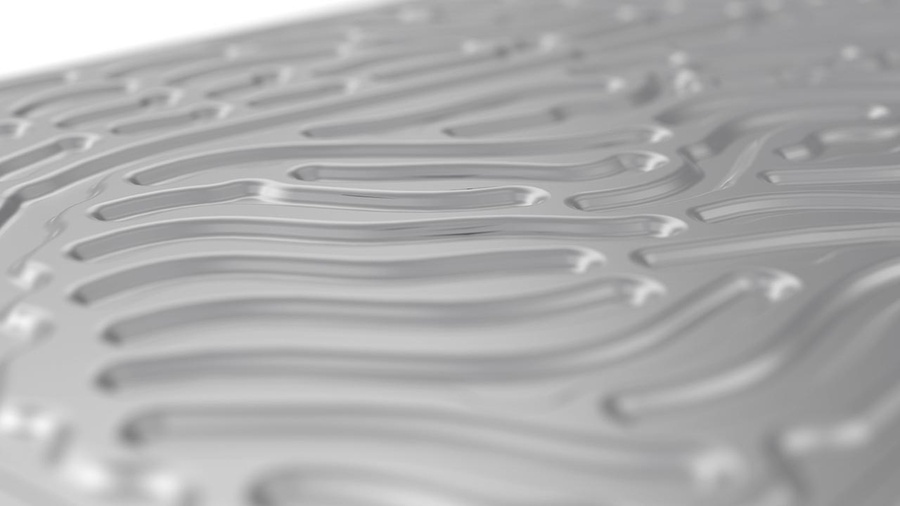According to MAHLE, the bionic structure of the cooling channels significantly improves the thermodynamic performance and structural-mechanical properties of the cooling plate. Specifically, engineers increased the cooling capacity by ten percent and reduced the pressure drop by 20 percent.
This helps keep the battery within the optimal temperature window; in lithium batteries, the cell temperature should not exceed 40 degrees Celsius, even under strenuous conditions such as fast charging. At the same time, the temperature distribution across the cells must be as uniform as possible, which is where the flow plates come in.
MAHLE says its new design controls the flow of coolant as required. Especially when there are small temperature differences between the battery cells and the coolant, slower flow rates improve heat transfer. MAHLE claims its bionic battery cooling plate works so efficiently here that the temperature range can be reduced by 50 percent and peak temperatures can be significantly lowered. As a result, the battery is more efficient and can be safely charged faster, resulting in longer battery life.
Mahle also points out the design advantages of the bionic structure. By taking inspiration from corals, engineers achieved greater stiffness, allowing them to use thinner material in new manufacturing processes that require less energy.
“With our new battery cooling plate, we are breaking away from technical geometries and instead using natural structures, such as the coral shape-with outstanding effect for our cooling technology and great advantages in structural stability to boot,” said Dr Uli Christian Blessing, head of global development thermal management at MAHLE.
MAHLE will present its new bionic battery cooling plate for the first time at the IAA Mobility in Munich in September 2023.
Source: MAHLE


